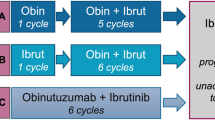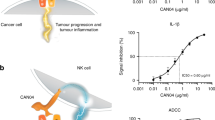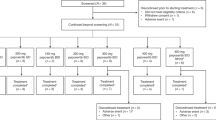Abstract
Bryostatin 1 is a macrocyclic lactone derived from the marine invertebrate Bugula neritina. In vitro, bryostatin 1 activates protein kinase C (PKC), induces the differentiation of a number of cancer cell lineages, exhibits anti-tumour activity and augments the response of haemopoietic cells to certain growth factors. In vivo, bryostatin 1 is also immunomodulatory, but the range of tumours which respond to bryostatin 1 in xenograft tumour models is mostly the same as the in vitro tumour types, suggesting a direct mode of action. Nineteen patients with advanced malignancy were entered into a phase I study in which bryostatin 1 was given as a 24 h intravenous infusion, weekly, for 8 weeks. Myalgia was the dose-limiting toxicity and the maximum tolerated dose was 25 micrograms m-2 per week. The myalgia was cumulative and dose related, and chiefly affected the thighs, calves and muscles of extraocular movement. The mechanism of the myalgia is unknown. CTC grade 1 phlebitis affected every patient for at least one cycle and was caused by the diluent, PET, which contains polyethylene glycol, ethanol and Tween 80. Most patients experienced a 1 g dl-1 decrease in haemoglobin within 1 h of commencing the infusion which was associated with a decrease in haematocrit. Radiolabelled red cell studies were performed in one patient to investigate the anaemia. The survival of radiolabelled red cells during the week following treatment was the same as that seen in the week before treatment. However, there was a temporary accumulation of radiolabelled red cells in the liver during the first hour of treatment, suggesting that pooling of erythrocytes in the liver might account for the decrease in haematocrit. Total or activated PKC concentrations were measured in the peripheral blood mononuclear cells (PBMCs) of three patients for the first 4 h of treatment and during the last hour of the infusion. This showed that PKC activity was significantly modulated during the infusion. Bryostatin 1 is immunomodulatory in vitro, and we have confirmed this activity in vivo. An investigation of the first three cycles of treatment in seven patients showed an increased IL-2-induced proliferative response in peripheral blood lymphocytes and enhanced lymphokine-activated killer (LAK) activity. A previously reported rise in serum levels of interleukin 6 (IL-6) and tumour necrosis factor alpha (TNF 1) was not confirmed in our study; of nine patients in this study, including patients at all dose levels, none showed an increase in these cytokines.(ABSTRACT TRUNCATED AT 400 WORDS)
This is a preview of subscription content, access via your institution
Access options
Subscribe to this journal
Receive 24 print issues and online access
$259.00 per year
only $10.79 per issue
Buy this article
- Purchase on Springer Link
- Instant access to full article PDF
Prices may be subject to local taxes which are calculated during checkout
Similar content being viewed by others
Author information
Authors and Affiliations
Rights and permissions
About this article
Cite this article
Jayson, G., Crowther, D., Prendiville, J. et al. A phase I trial of bryostatin 1 in patients with advanced malignancy using a 24 hour intravenous infusion. Br J Cancer 72, 461–468 (1995). https://doi.org/10.1038/bjc.1995.356
Issue Date:
DOI: https://doi.org/10.1038/bjc.1995.356
This article is cited by
-
Cancer Biomarkers for Integrative Oncology
Current Oncology Reports (2019)
-
Bryostatin-1 causes radiosensitization of BMG-1 malignant glioma cells through differential activation of protein kinase-Cδ not evident in the non-malignant AA8 fibroblasts
Molecular and Cellular Biochemistry (2015)
-
Phase I study of bryostatin 1, a protein kinase C modulator, preceding cisplatin in patients with refractory non-hematologic tumors
Cancer Chemotherapy and Pharmacology (2009)
-
Targeting the protein kinase C family: are we there yet?
Nature Reviews Cancer (2007)
-
A phase II trial of bryostatin-1 administered by weekly 24-hour infusion in recurrent epithelial ovarian carcinoma
British Journal of Cancer (2003)



